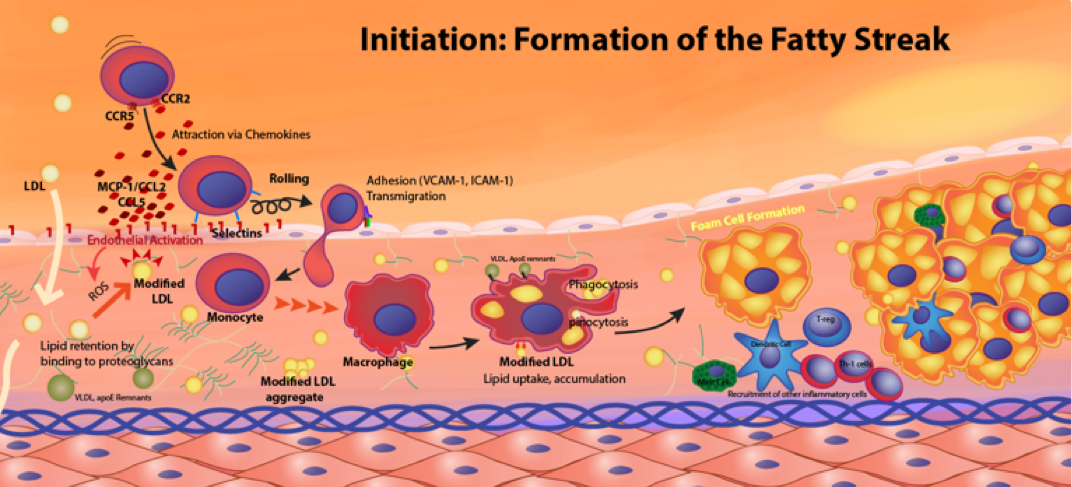
Figure 1. Initiation of the atherosclerotic lesion. The fatty streak phase of atherosclerosis begins with dysfunctional endothelial cells and the retention of apoB-containing lipoproteins (LDL, VLDL, and apoE remnants) in the subendothelial space. Retained lipoproteins are modified (oxidation, glycation, enzymatic), which, along with other atherogenic factors, promotes activation of endothelial cells. Activated endothelial cells have increased expression of monocyte interaction/adhesion molecules (selectins, VCAM-1) and chemoattractants (MCP-1) leading to attachment and transmigration of monocytes into the intimal space. Activated endothelial cells also promote the recruitment of other immune cells including dendritic cells, mast cells, regulatory T (T-reg) cells, and T helper 1 (Th-1) cells. The monocytes differentiate into macrophages and express receptors that mediate the internalization of VLDL, apoE remnants, and modified LDL to become foam cells. In addition, inflammatory signaling pathways are activated in macrophage foam cells leading to more cell recruitment and LDL modification.
